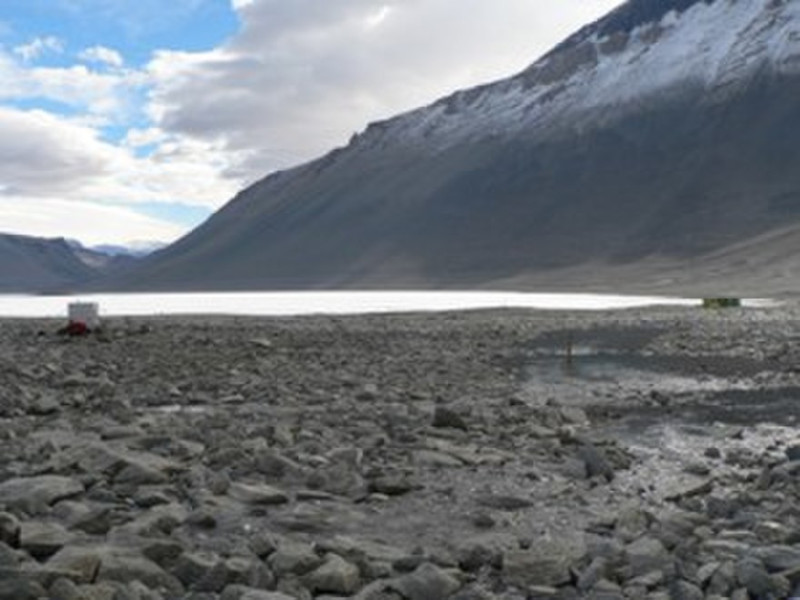Onyx River Facts
- Perhaps most notably, despite its common name, thelovely Onyx River, though admittedly amazing, does not actually qualify as a true river. In point of fact, the quite remarkable manifestation of geology actually represents a feature technically known as a meltwater stream.
- Unfortunately for those adventurous individuals who might wish to view it, this site’s located in a remote portion of the world. As a result of that remoteness, few humans ever have the chance to see it. That’s a shame, because it’s actually special for a very particular reason.
- That bold statement holds true due to one startling fact. No true rivers exist anywhere on the entire continent on which it formed. Its geological uniqueness, though, along with that of other meltwater streams in Antarctica, makes these rare occurrences qualify as rivers.
- The small but nonetheless lovely Onyx River remains by far the largest of the nine semi-permanent meltwater streams present on the remote continent, however. The fabulous and intriguing site also serves as the most ecologically important of the nine features.
- Unfortunately, all of them appear only during the few short months of the local summer season, making for extremely short-lived viewing opportunities. Although the incredible body of water remains considered a river, albeit a small one, no fish live in its frigid waters.
- Regardless of this limiting factor, its waters still hold yet another surprise for us. Its water supports a remarkably diverse assortment of microscopic life. Indeed, the fascinating algae blooms that often form within its confines sometimes reach impressive dimensions.
Related Articles
Onyx River Physical Description
Given its highly unique nature, the physical characteristics of the Onyx River understandably vary. When present, the small body of water flows westward through the Wright Valley. The flow also originates from the melting water of the Wright Lower Glacier, itself an astounding location.
Its nature also conceals another surprising fact. Interestingly, this beautiful yet freezing flow of meltwater does not wend its way into the ocean. The small flow is an excellent example of what is popularly known as endorheic drainage. This means it has no natural outflow to the ocean.
Along with numerous other factors, the dimensions of this marvel of Nature vary from season to season. Some of its physical measurements nonetheless remain roughly the same during the time it does appear. The total length of the unique river measures approximately 20 mi (32 km).
Winding along its course, the deceptively-named wonder creates still other marvels. That’s because it also forms several smaller, though still fascinating, tributaries. When it does make its appearances, the final destination of the Onyx River remains the small body of water known as Lake Vanda.
Multiple monitoring stations currently exist along its winding length. These many facilities serve the purpose of studying and monitoring its impact on the surrounding environment. During some local seasons, however, the flow of water actually evaporates before it reaches the very frigid lake.
Onyx River Location, Monitoring, and Importance
The remarkable Onyx River, despite its extreme degree of variability, in fact serves as one of the most interesting features existing anywhere within its area. As difficult as it may be to imagine, this true marvel of Nature appears in what may rightfully be considered the least likely location.
That’s because this wondrous flow formed on the continent of Antarctica. Not surprisingly, the marvel of Nature also constitutes a region of great, ongoing scientific interest. Due to this fact, the distinctive river serves as one of the many sites presently experiencing scientific investigation.
In its case, that’s conducted by the United States Antarctic Program of the National Science Foundation. This respected program continues to be ongoing at this time. The Antarctica New Zealand program also previously maintained a semi-permanent camp at Lake Vanda.
This camp, however, has since been removed. For the moment, at least, a small research shelter still exists at Lake Vanda at its eastern end, though. Nearby currently sits the Comprehensive Test Ban Treaty seismic station at Bull Pass. Other scientific sites may possibly be added in the future.
The true importance of this highly unique flow should not be underestimated by anyone, be they a professional researcher or otherwise. That statement holds true due to the fact that the unique brine flow of the Onyx River possesses an important ecological impact on the surrounding area.
In addition to the microscopic life in its waters, a few other small species also manamge to exist inside it. These include several nematodes. Gulls also sometimes make an appearance. Many countries therefore believe that monitoring the site continues to remain of great importance.
Features Sharing Its Region
Check out our other articles on 7 Lesser Known African Mammals, Mountain Chicken, Amethyst Deceiver, Goliath Stick Insect, Lake Superior, Saltwater Crocodile, European Hornet

